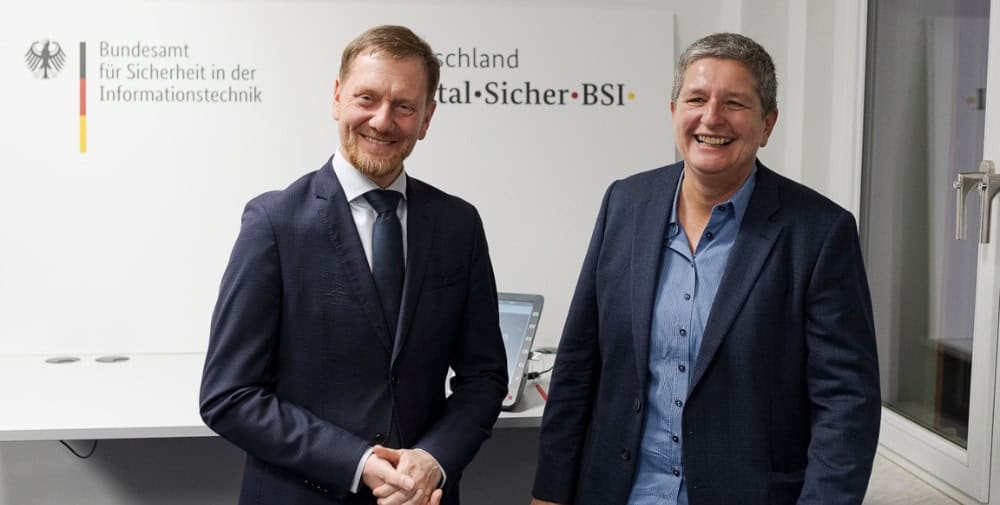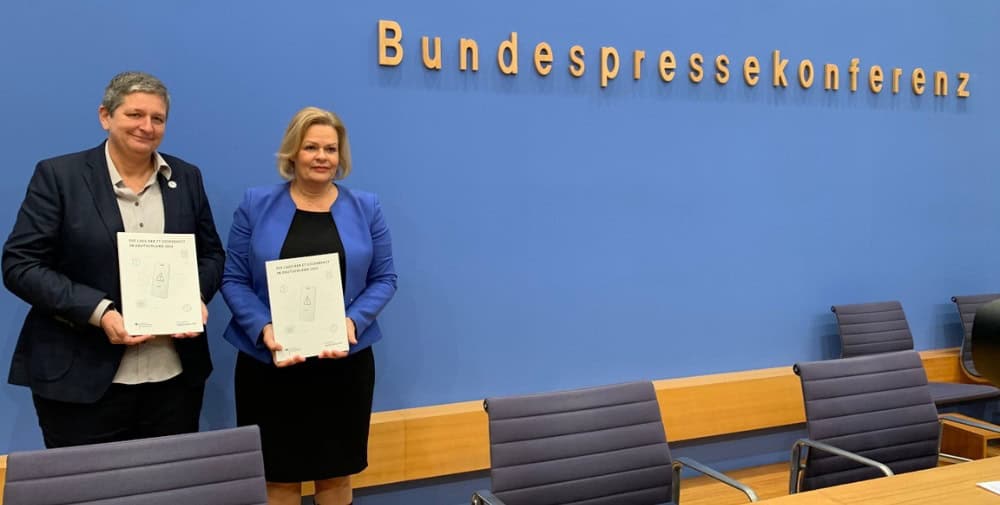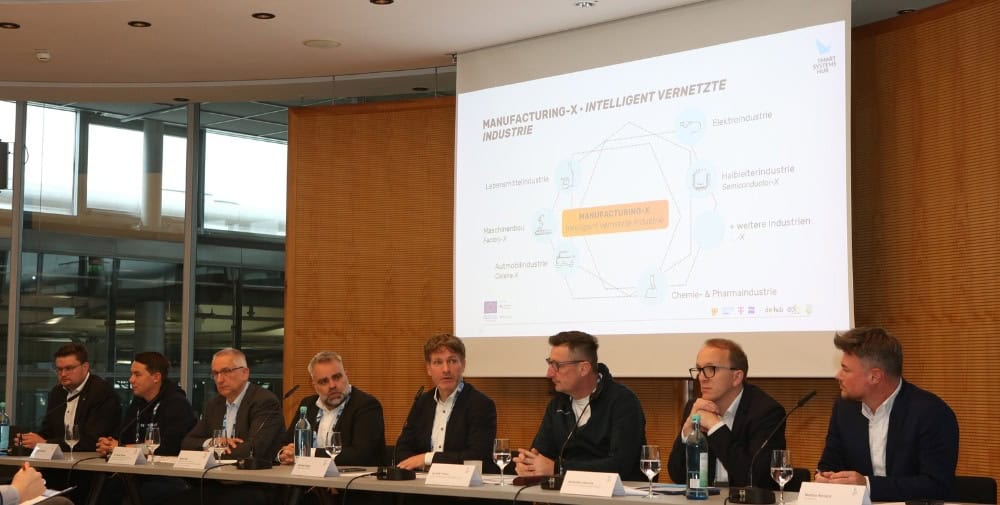So the use of artificial intelligence (AI) at DUALIS takes three forms. This makes us curious and we asked Managing Director Heike Wilson and Product Manager Dr. Kirsten Hoffmann what is behind this statement.
Can you explain in more detail what these three characteristics are and where DUALIS sees the benefits of artificial intelligence?
Heike Wilson: For DUALIS, we do indeed see three important aspects in which we see potential for the use of artificial intelligence. Firstly, how can we use AI to optimize ourselves, automate processes and thus become more efficient and successful as an organization? Secondly, how can we structure, collect and logically link data in such a way that our software products (particularly in the area of production planning) deliver even better and faster results with the help of AI? And thirdly, how can we make the user experience (UX) of our software solutions fit for the requirements of the future with the help of language bots and large language models? Ultimately, the use of AI should add value for our employees as well as our users and customers of our software.
Where specifically do you use AI to improve your business processes?
Heike Wilson: As an innovative software company, we naturally use powerful AI-supported code completion tools such as Github Copilot, which supports developers by automatically completing and generating code. Through contextual suggestions, these tools can not only generate simple code snippets, but also more complex functions and algorithms with coherent suggestions for improvement. This allows developers to devote more time to the creative processes specifying new or customer-specific features instead of having to code mindlessly.
On the subject of documentation, we have also just launched a project that will revolutionize the training of our employees and our customer service. We have trained an AI-based chatbot based on a RAG (Retrieval Augmented Generation) approach so that it can also answer complex questions using information from documents such as technical manuals and feature catalogs. As is usual with chatbots, the bot can be further trained by adapting the prompts and feedback and the quality of the results can be further improved.
Dr. Kirsten Hoffmann: We are also benefiting on experience from a collaboration with the Dresden-based AI start-up t2k GmbH on this topic. The project “From PDF to information source – how language models can interactively automate knowledge” deals with precisely this topic. Like many other companies, we too are sitting on text deserts that are almost impossible to manage and control: requirements documents are stored on shared drives and cannot be searched, user manuals are only available as PDFs that are difficult to handle, etc. We ask ourselves the most central question of how a software system can extract relevant information from different, scattered sources for documentation or research purposes and store it in a central and intelligent search index with the help of a language AI.
The texts can then be transferred (“embedded”) into neural semantic representations with the help of AI language models, which enable a deep search via the meanings themselves instead of the well-known “word scramble”. In a next step, we can use the index to train an AI-based chatbot that delivers the knowledge it contains to different user groups in an interactive and easy-to-understand way.
Let’s move on to your software solutions: Where is AI already being used in production planning?
Heike Wilson: AI is playing an increasingly important role in production planning by providing algorithms for handling complex planning tasks. The integration of AI into production planning enables the detailed analysis of large amounts of data in real time, leading to more accurate forecasts, more informed decisions and optimized resource allocation. This enables companies to better identify bottlenecks, optimize production times and ultimately achieve efficiency gains.
Everyone is talking about AI these days, and sometimes you get the feeling that the term can easily degenerate into an empty phrase. How do you see this development?
Dr. Kirsten Hoffmann: Many of the tools for production planning that are subsumed under the term AI today are based on mathematical optimization processes that have been tried and tested over many years. Both dialog-oriented, step-by-step plan improvements with the help of algorithms (some heuristics) and solver-based mathematical optimization methods are used. Only with the collection of structured data from all systems that manage planning-relevant data, as well as increasingly powerful computing power, are we getting closer to the goal of AI-optimized smart production planning step by step. With our new GANTTPLAN Analytics add-on, we are making our GANTTPLAN production planning software fit for future AI applications.
Where is DUALIS heading in terms of artificial intelligence in production planning? What insights can you already provide today?
Dr. Kirsten Hoffmann: The amount of data in production is constantly increasing – some of it is simply lying unused. GANTTPLAN Analytics is used to collect, process, analyse and visualize planning data in a structured, logic-based manner. The aim is to create robust forecasts by identifying patterns and interdependencies from the past and analyzing deviations from the plan, thereby putting planning on a more realistic path.
Additional analysis options and functions for production planning also include AI applications. Among other things, these can enable the prediction of deviating process durations and more realistic delivery dates. In addition, applications such as like-modeling are conceivable, which can automatically generate target times for new parts based on similar orders that have already been carried out.
Heike Wilson: We also see great added value in AI-based assistance functions as part of a new user experience (UX) that supports users in their complex daily operational planning tasks. For example, a voice bot could be given the following or similar tasks: “How many orders are currently delayed? Create an optimized alternative plan and visualize the three biggest bottlenecks in our production!” or “Create an overview of all delayed orders in relation to the number of all orders. Display these in a pie chart, staggered according to delay 1-2 days, 3-5 days, more than 6 days”. It will certainly be a few years before the planning copilot is introduced as an interactive assistant for daily planning. But our developments are already clearly heading in this direction.
Speaking of development. How long has AI been on the DUALIS roadmap?
Heike Wilson: We have been actively involved in industry-related research projects since 2021, long before the actual hype surrounding ChatGPT & Co, including a consortium project we initiated with regional institutions such as Fraunhofer IIS/EAS and HTW Dresden. Together with five long-term user companies, particularly from the SME sector, we have developed practical use cases to ensure that our AI add-ons bring countable benefits to users.
Another research project within the Dürr Group is using MES data from our parent company iTAC Software AG to analyze the accuracy of specification times for assembly processes at our sister companies HOMAG Plattenaufteiltechnik and HOMAG Kantentechnik. The aim is to determine more precise specification times for the innovative HOMAG machines and to achieve greater transparency and shorter throughput times.
Thank you very much for the interview Heike Wilson and Dr. Kirsten Hoffmann
_ _ _ _ _ _
The interviewees

Heike Wilson
Managing Director, DUALIS

Dr. Kirsten Hoffmann
Product Manager, DUALIS
_ _ _ _ _
This interview was created exclusively for NEXT magazine “In the spotlight: Software” and was provided by DUALIS GmbH IT Solution.
👉 To the complete issue of the magazine





